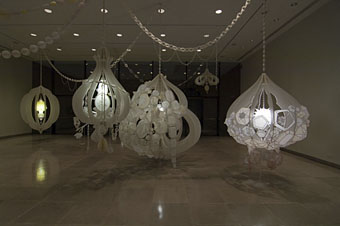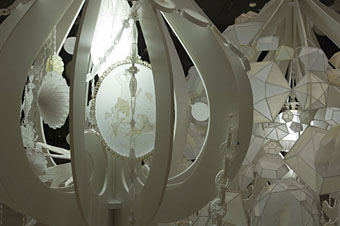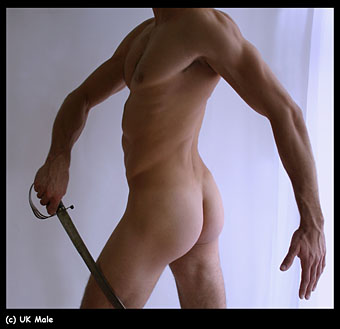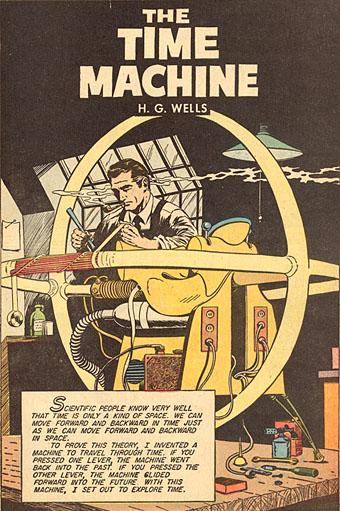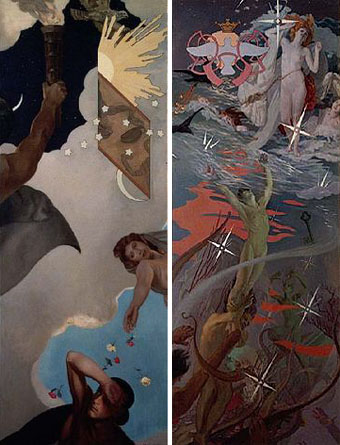
A Pictorial Sequence by RH Ives Gammell Based on
The Hound of Heaven (1956):
left: Panel II—I Fled Him, Down The Nights and Down The Days.
right: Panel XI—Would Clash It To.
I mentioned Francis Thompson’s poem The Hound of Heaven in the Stella Langdale post a couple of days ago. There don’t appear to be any examples of those pictures online but there are a few samples of RH Ives Gammell‘s remarkable paintings based on the same work which Claire alerted me to last month. Gammell (1893–1981) was an American realist with a forthright attitude that set him against Modernist and later art trends yet he was still able to incorporate a more contemporary approach to composition in these unique works. Too often pitching yourself against the present results in the kind of reactionary posturing one sees at the Art Renewal Center where they wish they could turn the clock back to a time before Picasso. Gammell was smarter than that and his Thompson paintings are a striking series of Tarot-like depictions of Christian mysticism.
Once again I have to make the complaint that there aren’t many good reproductions of these works online at the moment; a complete set of the pictures would be a start. The paintings themselves can be seen at the Maryhill Museum of Art, Goldendale, Washington, USA.
• RH Ives Gammell by Elizabeth Ives Hunter
• Transcending Vision; details of a 2001 exhibition
Elsewhere on { feuilleton }
• The fantastic art archive
Previously on { feuilleton }
• The art of Stella Langdale, 1880–1976

